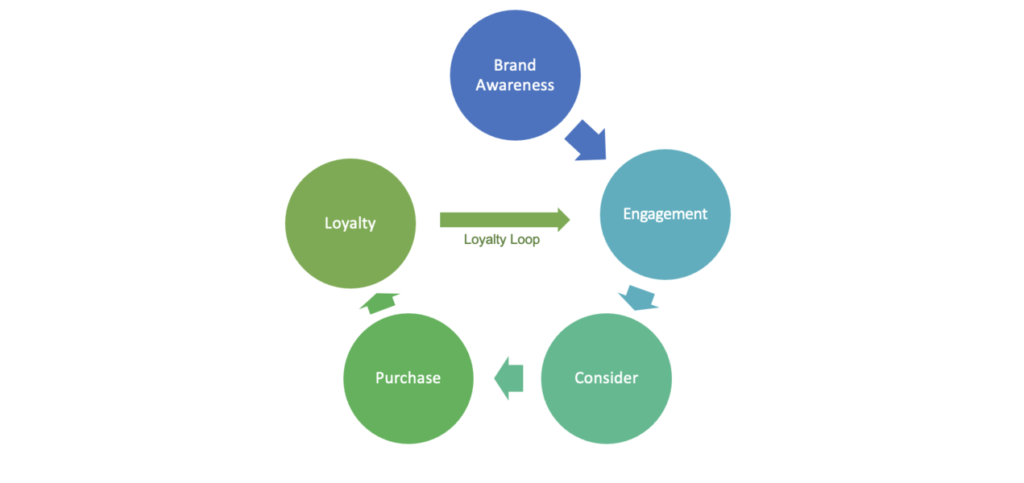A lot has already been written about how the old marketing funnel model is no longer as relevant in modern B2B organisations as it used to be, and how a flywheel model is more appropriate for how customers really buy (as an old colleague said to me “The person who invented the marketing funnel should be shot!”. I think that’s excessive, but it makes the point…). Here’s how HubSpot describe the alternative approach: https://www.hubspot.com/flywheel.
But rather than just repeat the work of others, I wanted to write an article on a model that I’ve been using for a few years now and which I found very helpful when making practical decisions about marketing activities. Models are all well and good but the reality is we have to make calls every day on where to spend our marketing budget and for this we need a robust model to help guide us in the right direction. Should we spend more on PPC ads? On brand building? On events? What? That’s more importantly, why? You will be asked why you decided to spend all of the budget on activity A rather than B. You need to have answers to those questions.
Here is the short version of my PowerPoint that goes through this model (there is an 80 slide version of this that I’m working on as well). To summarise the context for this:
- It’s focused on B2B marketing; a small to medium sized businesses; in the tech space; in the English speaking world. It certainly won’t be relevant to everyone – take the best, leave the rest.
- It’s really only about marketing. For this to really work it has to be part of an overall marketing/sales/product plan.
- It assumes you already have a little traction in the market. If you’re starting from zero brand awareness, that’s a different job.
- There isn’t really anything here about the order in which to do things. I.e. what’s the strategy to do the right things first to make the biggest impact earliest? That requires a diagnosis of your company’s current performance and challenges, which is different for every organisation. But that’s the most interesting and difficult part of the job. If you try to do everything in this deck all at once you will fail – the trick is getting the ordering correct.
- The plan relies on and assumes a relentless focus on the customers’ real problems. This is a cliche for a reason – the best marketing plan in the world will fail if you don’t have a deep understanding of the customers’ problems.
- It uses the “Pincer” GTM strategy, where you are selling to both the senior decision maker and the end user at the same time. If you only need to reach one of those people, your job is much easier 🙂
But to repeat, having some sort of model for how marketing works is crucial. Otherwise how can you make decisions about which levers to pull? About what effect you think you’re having? Of course sales is the end goal here but you need to understand what happens before the customer makes the purchase if you want to influence what happens at the end. And in a B2B process that can take months if not years from initial awareness to signing on the dotted line. Understanding the drivers between these two stages is the key to knowing how are you can influence the process and increasing the chances of hitting the revenue goals.
A final note – all of this is, of course, based on the work of many others and I’ve blatantly taken diagrams and paragraphs from other marketing practitioners. Almost all of the ideas here from other people, all I’ve tried to do is bring it together and find the links and similarities. Any errors are mine.

Leave a Reply